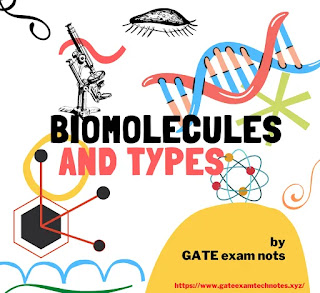Biomolecules
What are Biomolecules?
The Biomolecules are the organic molecules that are present in the living organism naturally and help to preform different process that are essential to life such as Cell division, Morphogenesis, Metabolism etc., These biomolecules are endogenous, produced with in the organisms. The biomolecules are generally composed of Carbon(C)-50%, Hydrogen(H)-10%, Oxygen(O)-20%, Nitrogen(N)-8.5% and Phosphorous(P)-2.5% to human body.
The Biomolecules are differing in size macromolecules such as Carbohydrates, Lipids, Nucleic Acids, Proteins and Micro molecules such as trace minerals, nucleotides, gases, amino acids, water and so on.
Carbon is the most important element as it can form single, double and triple bond with other elements also. Carbon atom can be linked together to form backbones of verities of biomolecules. The stereochemical features of biomolecules can be represented in different forms such as Flying wedge, Sawhorse, newman, fischer etc.,
Major types of Biomolecules
- Carbohydrates
- Proteins
- Lipids
- Nucleic Acids
Types of Biomolecules
Carbohydrates
Carbohydrates are biomolecules which is mainly made up of Carbon(C), Hydrogen(H), Oxygen(O). These carbohydrates are abundant in nature they contain small subunits called monomers. The carbohydrates can be divided into four groups, Monosaccharides, Disaccharides, Oligosaccharides ,Polysaccharides. The carbohydrates are generally called sugar and sweet in taste. They are collectively called as saccharides. The different types of carbohydrates are Glucose, Fructose, Galactose , Sucrose, Maltose, Lactose, Starch, Cellulose, Glycogen.
Lipids
Lipids is a macro biomolecules which is non-polar and insoluble in water. Lipids serves as energy storage constituent in body such as fat, oils and hormones. The membranes of cells are made up of two layer of phospholipid molecules. lipids are classified into few major groups such as, saturated fatty acids, unsaturated fatty acids, cholesterol and its derivatives, lipoproteins. Too much of lipid content in our body can causes certain health issues.
Proteins
Nucleic acids
Enzymes
Enzymes are the biocatalyst that can help to speed up the reactions. All the enzymes are proteins but not all the proteins are enzymes. Enzymes are classified based up on the type of reaction catalyzed they are Ligase, Lyases, Transferases , Oxidoreductases, Hydrolases and Isomerases.



0 Comments